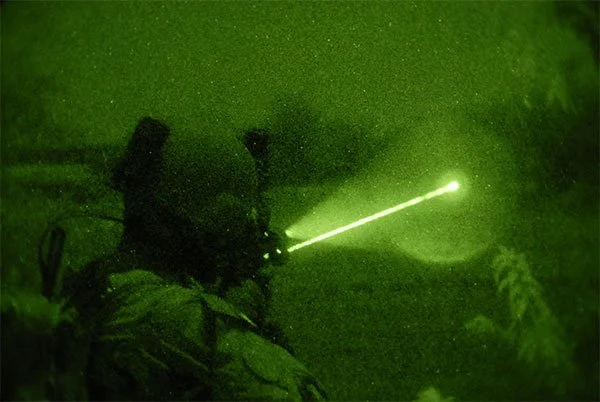FRICKEN LASER BEAMS…
I was asked recently about night/low light training by a member of the program I support.
First, let’s talk basics;
Do you have a laser and NODs?
Do they have batteries in them?
Do the batteries work? (laugh all you want but I would put money on the fact that a spot check would show *at least* one guy at your site either doesn’t have batteries at all or is carrying dead batteries in one or both)
Is your laser zeroed?
Do you know what kind of zero?
Do you know how to select the settings and activate it?
Do you also have a white light?
CRAWL
Working at night under NODs is something that needs to be practiced. Even more so in a team environment. The shooting is the easy part. It's everything else that's harder with tubes on. Not to worry though. You can practice most of it dry or walking around the base. Your switchology (turning stuff on/off), reloads, malfunction clearances, etc. can all be done without firing a single shot. That’s where you, as an individual, are going to make most of your money. We should all be able to turn our lasers on and off, illuminate dark spaces or past light sources, load our weapons, run our comms, and clear malfunctions without needing to flip up our tubes and use white light. Comfort/competence under NODs is huge. Building that is actually easier to do when your *not* worrying about wasting training time on the range. Playing catch with a nerf ball, going for a walk through the camp, driving the perimeter, etc. are all good ways to get time under your tubes without wasting range time.
WALK
Any qual/drill that you can shoot during daylight you can shoot under NODs. That Mod Navy Qual that I sent out a couple of weeks ago is a good one. Reloads and different positions force guys to get their gear inline. If it's whipping someone's ass, they should probably change things.
Some of the most useful night vision training I've done was set up by a team mate of mine. He put together a "land nav" course (for lack of a better term) for us on our base in the secondary. It required we move to a given point, read a set of instructions (different skills; malfunction clearing, knot tying, TQ application, radio channel manipulation, etc.), accomplish the task, and then where to go next.
The course that he laid out had us moving up and down stairs, climbing ladders, getting in and out of armored vehicles, opening cipher locks, etc. As an example, you might get to a point and read "tie a figure-8 on a bite, then move to the RC closest to the gate and enter the TC's door". You'd find the next set of instructions on the dash there. It was a great way to get time under tubes without things getting boring.
This is where you’re going to start working as a team. Indoors and outdoors. Walk through your SOPs dry. Focus on team awareness and command and control.
RUN
Working through a training cycle with your team can culminate with live-fire exercises and working with additional elements. In my experience, it’s very hard, and very rare to get there on a program like this. There is just too much turnover.
NOTE - We can't assume only our side has NODs these days (this has been true for well over a decade, but some guys are slow to change). IR discipline should be treated with the same seriousness as white light discipline. No waving lightsabers around while moving.
We’re all professionals with backgrounds or we wouldn’t be here. However, there are different levels of experience across the program. If you don’t know, ask. If you’re an SME in this stuff and nerd out studying photonic barriers, help your team mates. NODs and PEQs aren’t magic talismans. You can’t just *have* it and expect to be good. You have to put in the work.


